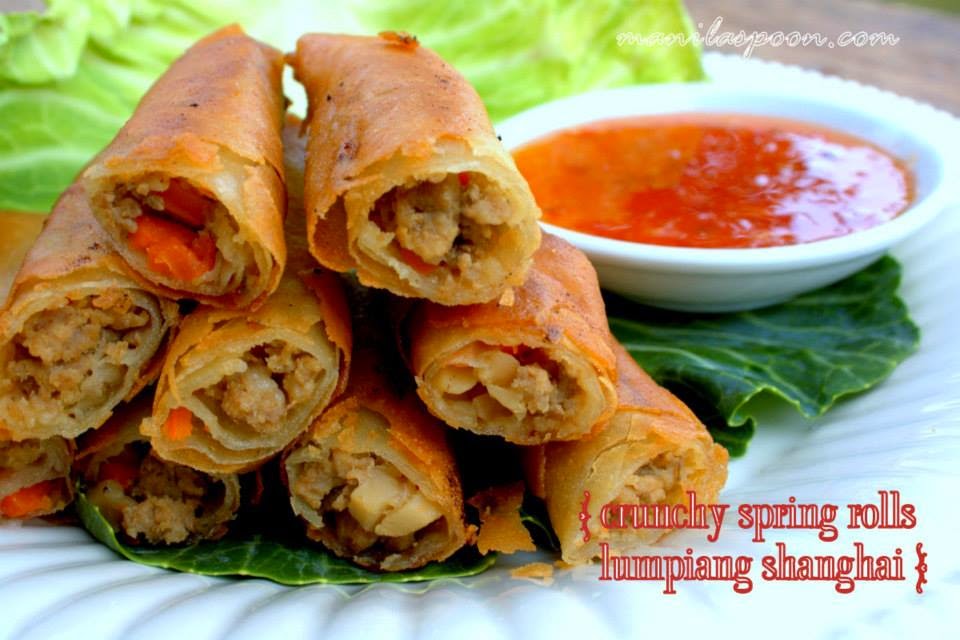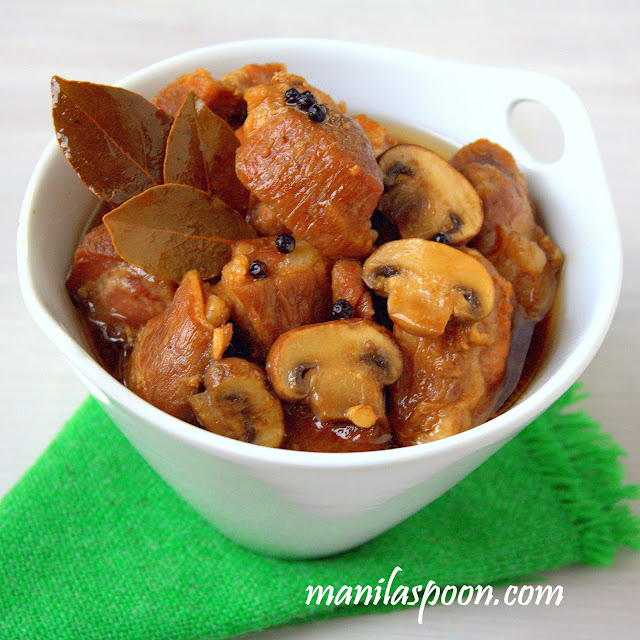I bought a big family pack of boneless pork ribs this week so I had been cooking Filipino food like crazy! Adobo, menudo, Asian Bar-B-Q ribs are just some of the recipes on my menu list.
This particular menudo recipe is one which my mom cooks for us especially when I am at home on vacation. She told me that to give the meat a really good flavor you need to cook it with fresh tomatoes and not just dump it with the tomato sauce. Also, she does not use tomato sauce (though that's fine if you prefer to use this instead) but ketchup 'cause it's a little sweeter than tomato sauce (at least the Filipino ketchup!) and enhances the flavor of the whole stew. Another technique that she told me is to make sure that you only put the ketchup towards the end of cooking so it does not overpower the whole dish but "enhance" it. So, my only contribution here really is adding a little lemon juice to perk up the dish - I think that and fish sauce really make this a yummy dish.
Think of this recipe as a basic guide and tweak the seasoning to your liking. This dish is so good that you won't even miss the liver pate that is added in traditional menudo. My hubby doesn't like liver so am glad that I can make a delicious menudo without it! Thanks, Mom!
Ingredients
2.2 lbs/1 kilo pork (Pork belly, shoulder or boneless ribs), chopped into cubes (1 to 11/2 inch)
2 Onions, chopped
1 head Garlic (or 6-8 cloves), peeled
Salt and pepper, to taste
2 large Plum Tomatoes, chopped
2 Tablespoons Fish Sauce*
2 dried or fresh Bay (Laurel) leaves
1/2 cup Water
2 medium to large Potatoes, cubed
2 medium Carrots, cubed
1/4-1/3 cup Ketchup (pref. the Del Monte Tomato Ketchup brand)*
1 Red Bell pepper, chopped (roughly the size of the carrots and potatoes)
1/2 cup raisins (I end up using more 'cause I love raisins on anything!)
Brown sugar, to taste
*If you're not a fan of fish sauce you can replace it with Soy sauce (start with 1-2 Tablespoons) and a little lemon juice (2 teaspoons). You can adjust the taste to your liking. Fish sauce is great though. :-)
*You can also use tomato sauce.
Procedure
Place the pork cubes in a large pan or Dutch oven and let it cook in medium heat until it changes its color. No need for any oil as the meat will release some of its fat in the process. Add the garlic and onions and sauté. Season with a little salt. Continue to cook until the pork has browned (but not fried all the way) and the onions have softened.
Add the tomatoes and fish sauce and continue to sauté for a couple of minutes. Add the bay leaves. Cover and simmer on low until the pork is tender.
When the pork is already tender, add the water, potatoes and carrots. Cook covered until the vegetables are tender. Add the sweet peppers, raisins and the ketchup (or tomato sauce). Cook for another 5 minutes or just until the raisins are re-hydrated and the sauce is fully heated through.
Adjust the seasoning to your taste. If it's a little tart, sprinkle some brown sugar to balance the taste. Don't make it too sweet as you have raisins to balance the sour and savory flavor of the other ingredients. It should just be a perfect balance of sweet, tart and salty! Have it with rice, of course!
If you wish to print the recipe, there's a print-friendly icon at the end of the post. Click on the "remove images box" for easy printing.
If you like what you see and would like to receive new recipe updates we'd love you to subscribe to our posts and join our site. Also do like us in Facebook so you can get the latest updates and so much more. Thanks for visiting and happy browsing!






















